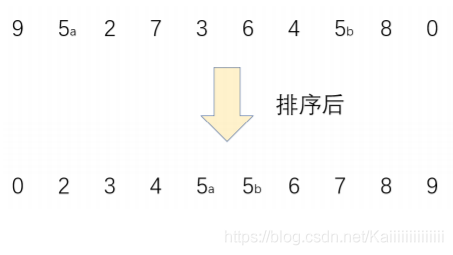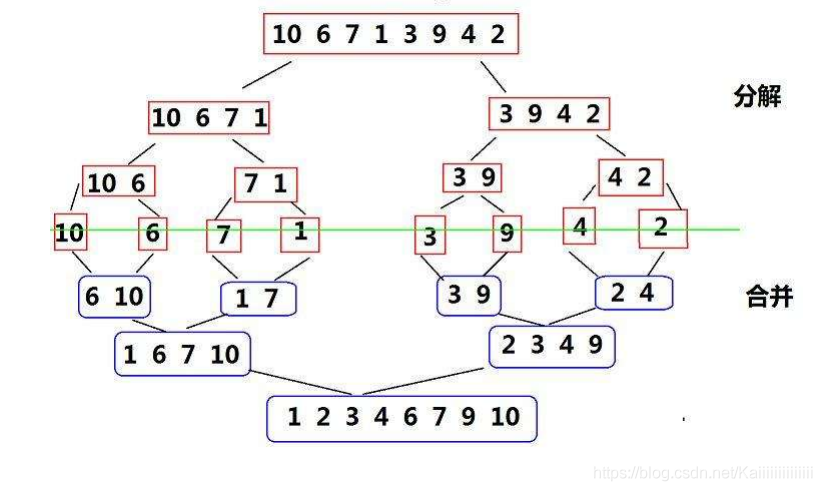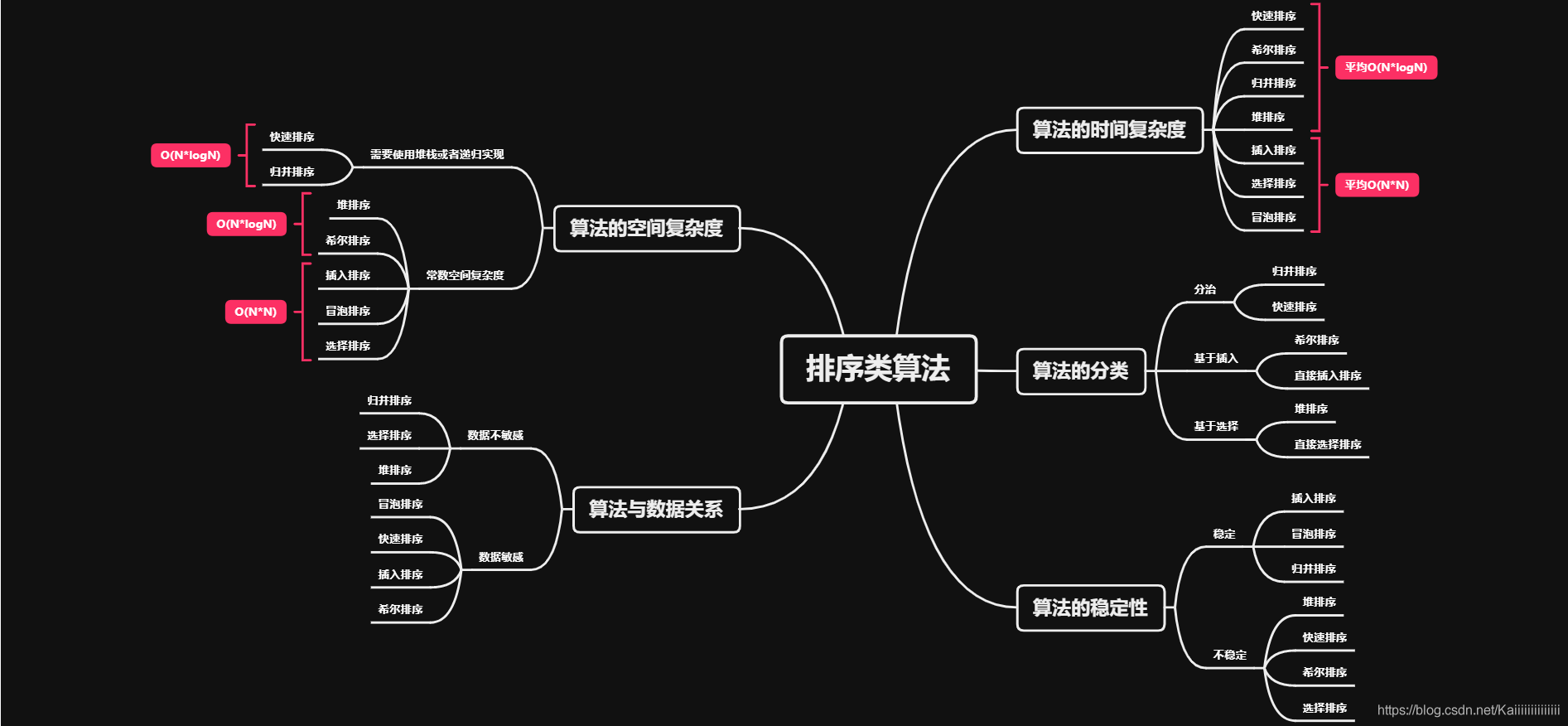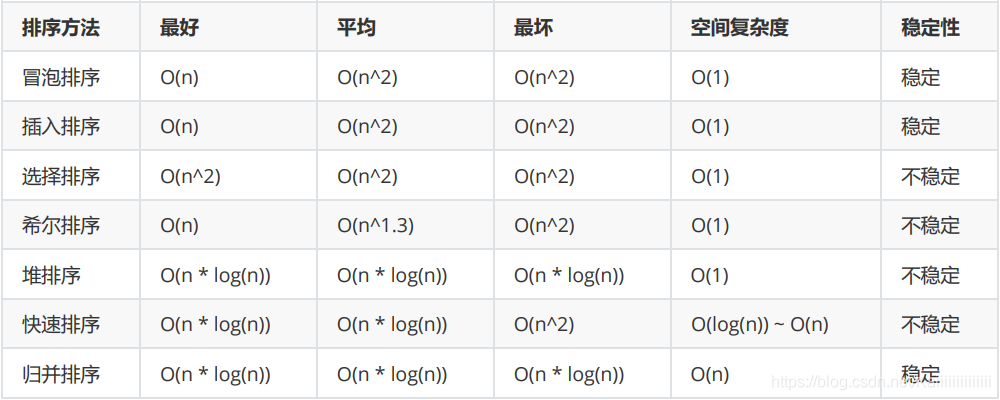жӮЁеҘҪпјҢзҷ»еҪ•еҗҺжүҚиғҪдёӢи®ўеҚ•е“ҰпјҒ
жң¬зҜҮеҶ…е®№дё»иҰҒи®Іи§ЈвҖңJavaйӣҶеҗҲе’Ңж•°жҚ®з»“жһ„жҺ’еәҸзҡ„е®һдҫӢд»Ӣз»ҚвҖқпјҢж„ҹе…ҙи¶Јзҡ„жңӢеҸӢдёҚеҰЁжқҘзңӢзңӢгҖӮжң¬ж–Үд»Ӣз»Қзҡ„ж–№жі•ж“ҚдҪңз®ҖеҚ•еҝ«жҚ·пјҢе®һз”ЁжҖ§ејәгҖӮдёӢйқўе°ұи®©е°Ҹзј–жқҘеёҰеӨ§е®¶еӯҰд№ вҖңJavaйӣҶеҗҲе’Ңж•°жҚ®з»“жһ„жҺ’еәҸзҡ„е®һдҫӢд»Ӣз»ҚвҖқеҗ§!
жҰӮеҝө
жҸ’е…ҘжҺ’еәҸ
зӣҙжҺҘжҸ’е…ҘжҺ’еәҸ
д»Јз Ғе®һзҺ°
жҖ§иғҪеҲҶжһҗ
еёҢе°”жҺ’еәҸ
д»Јз Ғе®һзҺ°
жҖ§иғҪеҲҶжһҗ
йҖүжӢ©жҺ’еәҸ
зӣҙжҺҘйҖүжӢ©жҺ’еәҸ
д»Јз Ғе®һзҺ°
жҖ§иғҪеҲҶжһҗ
е ҶжҺ’еәҸ
д»Јз Ғе®һзҺ°
жҖ§иғҪеҲҶжһҗ
дәӨжҚўжҺ’еәҸ
еҶ’жіЎжҺ’еәҸ
д»Јз Ғе®һзҺ°
жҖ§иғҪеҲҶжһҗ
еҝ«йҖҹжҺ’еәҸ
д»Јз Ғе®һзҺ°
жҖ§иғҪеҲҶжһҗ
йқһйҖ’еҪ’е®һзҺ°еҝ«йҖҹжҺ’еәҸ
д»Јз Ғе®һзҺ°
жҖ§иғҪеҲҶжһҗ
еҪ’并жҺ’еәҸ
еҪ’并жҺ’еәҸ
д»Јз Ғе®һзҺ°
жҖ§иғҪеҲҶжһҗ
йқһйҖ’еҪ’е®һзҺ°еҪ’并жҺ’еәҸ
д»Јз Ғе®һзҺ°
жҖ§иғҪеҲҶжһҗ
жө·йҮҸж•°жҚ®зҡ„жҺ’еәҸй—®йўҳ
жҺ’еәҸпјҢе°ұжҳҜдҪҝдёҖдёІи®°еҪ•пјҢжҢүз…§е…¶дёӯзҡ„жҹҗдёӘжҲ–жҹҗдәӣе…ій”®еӯ—зҡ„еӨ§е°ҸпјҢйҖ’еўһжҲ–йҖ’еҮҸзҡ„жҺ’еҲ—иө·жқҘзҡ„ж“ҚдҪңгҖӮ
е№іж—¶зҡ„дёҠдёӢж–ҮдёӯпјҢеҰӮжһңжҸҗеҲ°жҺ’еәҸпјҢйҖҡеёёжҢҮзҡ„жҳҜжҺ’еҚҮеәҸпјҲйқһйҷҚеәҸпјүгҖӮ
йҖҡеёёж„Ҹд№үдёҠзҡ„жҺ’еәҸпјҢйғҪжҳҜжҢҮзҡ„еҺҹең°жҺ’еәҸ(in place sort)гҖӮ
зЁіе®ҡжҖ§пјҡ дёӨдёӘзӣёзӯүзҡ„ж•°жҚ®пјҢеҰӮжһңз»ҸиҝҮжҺ’еәҸеҗҺпјҢжҺ’еәҸз®—жі•иғҪдҝқиҜҒе…¶зӣёеҜ№дҪҚзҪ®дёҚеҸ‘з”ҹеҸҳеҢ–пјҢеҲҷжҲ‘们称иҜҘз®—жі•жҳҜе…·еӨҮзЁіе®ҡжҖ§зҡ„жҺ’еәҸз®—жі•гҖӮ


ж•ҙдёӘеҢәй—ҙиў«еҲҶдёә
жңүеәҸеҢәй—ҙ
ж— еәҸеҢәй—ҙ
жҜҸж¬ЎйҖүжӢ©ж— еәҸеҢәй—ҙзҡ„第дёҖдёӘе…ғзҙ пјҢеңЁжңүеәҸеҢәй—ҙеҶ…йҖүжӢ©еҗҲйҖӮзҡ„дҪҚзҪ®жҸ’е…Ҙ
йҖ»иҫ‘д»Јз Ғпјҡ
public class InsertSort {
public static void insertSort(int[] array) {
for (int i = 1; i < array.length; i++) {
int temp = array[i];
int j = i-1;
for (; j >= 0; j--) {
if (array[j] > temp) {
array[j+1] = array[j];
}else {
break;
}
}
array[j+1] = temp;
}
}
}и°ғиҜ•д»Јз Ғпјҡ
public class TestDemo {
public static void main(String[] args) {
int[] array = {10,3,2,7,19,78,65,127};
System.out.println("жҺ’еәҸеүҚпјҡ" + Arrays.toString(array));
InsertSort.insertSort(array);
System.out.println("жҺ’еәҸеҗҺпјҡ" + Arrays.toString(array));
}
}иҜҘд»Јз Ғзҡ„жү§иЎҢз»“жһңдёәпјҡ

еҸҜи§ҒпјҢе®һзҺ°дәҶеҜ№еҺҹж•°з»„зҡ„еҚҮеәҸжҺ’еәҸгҖӮ
ж—¶й—ҙеӨҚжқӮеәҰпјҡ
жңҖеҘҪжғ…еҶөпјҡO(n)гҖҗж•°жҚ®жңүеәҸгҖ‘
е№іеқҮжғ…еҶөпјҡO(n2)
жңҖеқҸжғ…еҶөпјҡO(n2)гҖҗж•°жҚ®йҖҶеәҸгҖ‘
з©әй—ҙеӨҚжқӮеәҰпјҡO(1)
зЁіе®ҡжҖ§пјҡзЁіе®ҡ
еҜ№дәҺзӣҙжҺҘжҸ’е…ҘжҺ’еәҸпјҡи¶ҠжңүеәҸи¶Ҡеҝ«гҖӮеҸҰеӨ–пјҢзӣҙжҺҘжҸ’е…ҘжҺ’еәҸдјҡз”ЁеңЁдёҖдәӣжҺ’еәҸзҡ„дјҳеҢ–дёҠгҖӮ
еёҢе°”жҺ’еәҸжі•еҸҲз§°зј©е°ҸеўһйҮҸжі•гҖӮеёҢе°”жҺ’еәҸжі•зҡ„еҹәжң¬жҖқжғіжҳҜпјҡе…ҲйҖүе®ҡдёҖдёӘж•ҙж•°пјҢжҠҠеҫ…жҺ’еәҸж–Ү件дёӯжүҖжңүи®°еҪ•еҲҶжҲҗдёӘз»„пјҢжүҖжңүи·қзҰ»дёәзҡ„и®°еҪ•еҲҶеңЁеҗҢдёҖз»„еҶ…пјҢ并еҜ№жҜҸдёҖз»„еҶ…зҡ„и®°еҪ•иҝӣиЎҢжҺ’еәҸгҖӮ然еҗҺпјҢеҸ–пјҢйҮҚеӨҚдёҠиҝ°еҲҶз»„е’ҢжҺ’еәҸзҡ„е·ҘдҪңгҖӮеҪ“еҲ°иҫҫ=1ж—¶пјҢ жүҖжңүи®°еҪ•еңЁз»ҹдёҖз»„еҶ…жҺ’еҘҪеәҸгҖӮ
еёҢе°”жҺ’еәҸжҳҜеҜ№зӣҙжҺҘжҸ’е…ҘжҺ’еәҸзҡ„дјҳеҢ–гҖӮ
еҪ“gap > 1ж—¶йғҪжҳҜйў„жҺ’еәҸпјҢзӣ®зҡ„жҳҜи®©ж•°з»„жӣҙжҺҘиҝ‘дәҺжңүеәҸгҖӮеҪ“gap == 1ж—¶пјҢж•°з»„е·Із»ҸжҺҘиҝ‘жңүеәҸзҡ„дәҶпјҢиҝҷж ·е°ұдјҡеҫҲеҝ«гҖӮиҝҷж ·ж•ҙдҪ“иҖҢиЁҖпјҢеҸҜд»ҘиҫҫеҲ°дјҳеҢ–зҡ„ж•ҲжһңгҖӮжҲ‘们е®һзҺ°еҗҺеҸҜд»ҘиҝӣиЎҢжҖ§иғҪжөӢиҜ•зҡ„еҜ№жҜ”гҖӮ
йҖ»иҫ‘д»Јз Ғпјҡ
public class ShellSort {
public static void shell(int[] array,int gap) {
for (int i = gap; i < array.length; i = i + gap) {
int temp = array[i];
int j = i-gap;
for (; j >= 0; j = j-gap) {
if (array[j] > temp) {
array[j+gap] = array[j];
}else {
break;
}
}
array[j+gap] = temp;
}
}
public static void shellSort(int[] array) {
int[] drr = {5,3,1};//еўһйҮҸж•°з»„-->жІЎжңүжҳҺзЎ®зҡ„规е®ҡпјҢдҪҶдҝқиҜҒдёәзҙ ж•°зҡ„еўһйҮҸеәҸеҲ—
for (int i = 0; i < drr.length; i++) {
shell(array,drr[i]);
}
}
}жөӢиҜ•д»Јз Ғпјҡ
public class TestDemo {
public static void main(String[] args) {
int[] array = {10,3,2,7,19,78,65,127};
System.out.println("жҺ’еәҸеүҚпјҡ" + Arrays.toString(array));
ShellSort.shellSort(array);
System.out.println("жҺ’еәҸеҗҺпјҡ" + Arrays.toString(array));
}
}иҜҘд»Јз Ғзҡ„жү§иЎҢз»“жһңдёәпјҡ

еҸҜи§ҒпјҢе®һзҺ°дәҶеҜ№еҺҹж•°з»„зҡ„еҚҮеәҸжҺ’еәҸгҖӮ
ж—¶й—ҙеӨҚжқӮеәҰпјҡ
жңҖеҘҪжғ…еҶөпјҡO(n)гҖҗж•°жҚ®жңүеәҸгҖ‘
е№іеқҮжғ…еҶөпјҡO(n1.3)
жңҖеқҸжғ…еҶөпјҡ O(n2) гҖҗжҜ”иҫғйҡҫжһ„йҖ гҖ‘
з©әй—ҙеӨҚжқӮеәҰпјҡO(1)
зЁіе®ҡжҖ§пјҡдёҚзЁіе®ҡ
жҜҸдёҖж¬Ўд»Һж— еәҸеҢәй—ҙйҖүеҮәжңҖеӨ§пјҲжҲ–жңҖе°Ҹпјүзҡ„дёҖдёӘе…ғзҙ пјҢеӯҳж”ҫеңЁж— еәҸеҢәй—ҙзҡ„жңҖеҗҺпјҲжҲ–жңҖеүҚпјүпјҢзӣҙеҲ°е…ЁйғЁеҫ…жҺ’еәҸзҡ„ж•°жҚ®е…ғзҙ жҺ’е®Ң гҖӮ
йҖ»иҫ‘д»Јз Ғпјҡ
public class SelectSort {
public static void selectSort(int[] array) {
for (int i = 0; i < array.length-1; i++) {
for (int j = i+1; j < array.length; j++) {
if (array[i] > array[j]) {
int temp = array[j];
array[j] = array[i];
array[i] = temp;
}
}
}
}
}жөӢиҜ•д»Јз Ғпјҡ
public class TestDemo {
public static void main(String[] args) {
int[] array = {10,3,2,7,19,78,65,127};
System.out.println("жҺ’еәҸеүҚпјҡ" + Arrays.toString(array));
SelectSort.selectSort(array);
System.out.println("жҺ’еәҸеҗҺпјҡ" + Arrays.toString(array));
}
}иҜҘд»Јз Ғзҡ„жү§иЎҢз»“жһңдёәпјҡ

еҸҜи§ҒпјҢе®һзҺ°дәҶеҜ№еҺҹж•°з»„зҡ„еҚҮеәҸжҺ’еәҸгҖӮ
ж—¶й—ҙеӨҚжқӮеәҰ : дёҚз®ЎжҳҜжңҖеҘҪжғ…еҶөиҝҳжҳҜжңҖеқҸжғ…еҶөйғҪжҳҜO(n2) гҖҗж•°жҚ®дёҚж•Ҹж„ҹгҖ‘
з©әй—ҙеӨҚжқӮеәҰ: O(1)
зЁіе®ҡжҖ§пјҡдёҚзЁіе®ҡ
еҹәжң¬еҺҹзҗҶд№ҹжҳҜйҖүжӢ©жҺ’еәҸпјҢеҸӘжҳҜдёҚеңЁдҪҝз”ЁйҒҚеҺҶзҡ„ж–№ејҸжҹҘжүҫж— еәҸеҢәй—ҙзҡ„жңҖеӨ§зҡ„ж•°пјҢиҖҢжҳҜйҖҡиҝҮе ҶжқҘйҖүжӢ©ж— еәҸеҢәй—ҙзҡ„жңҖеӨ§зҡ„ж•°гҖӮ
жіЁж„ҸпјҡжҺ’еҚҮеәҸиҰҒе»әеӨ§е ҶпјӣжҺ’йҷҚеәҸиҰҒе»әе°Ҹе ҶгҖӮ
йҖ»иҫ‘д»Јз Ғпјҡ
public class HeapSort {
public static void heapSort(int[] array) {
PriorityQueue<Integer> priorityQueue = new PriorityQueue<>(new Comparator<Integer>() {
@Override
public int compare(Integer o1, Integer o2) {
return o1-o2;
}
});
for (int i = 0; i < array.length; i++) {
priorityQueue.add(array[i]);
}
for (int i = 0; i < array.length; i++) {
array[i] = priorityQueue.poll();
}
}
}жөӢиҜ•д»Јз Ғпјҡ
public class TestDemo {
public static void main(String[] args) {
int[] array = {10,3,2,7,19,78,65,127};
System.out.println("жҺ’еәҸеүҚпјҡ" + Arrays.toString(array));
HeapSort.heapSort(array);
System.out.println("жҺ’еәҸеҗҺпјҡ" + Arrays.toString(array));
}
}иҜҘд»Јз Ғзҡ„жү§иЎҢз»“жһңдёәпјҡ

еҸҜи§ҒпјҢе®һзҺ°дәҶеҜ№еҺҹж•°з»„зҡ„еҚҮеәҸжҺ’еәҸгҖӮ
ж—¶й—ҙеӨҚжқӮеәҰпјҡдёҚз®ЎжҳҜжңҖеҘҪзҡ„жғ…еҶөиҝҳжҳҜжңҖеқҸзҡ„жғ…еҶөйғҪжҳҜO(n * log(n)) гҖӮ
з©әй—ҙеӨҚжқӮеәҰпјҡO(1)гҖӮ
зЁіе®ҡжҖ§пјҡдёҚзЁіе®ҡ
еңЁж— еәҸеҢәй—ҙпјҢйҖҡиҝҮзӣёйӮ»ж•°зҡ„жҜ”иҫғпјҢе°ҶжңҖеӨ§зҡ„ж•°еҶ’жіЎеҲ°ж— еәҸеҢәй—ҙзҡ„жңҖеҗҺпјҢжҢҒз»ӯиҝҷдёӘиҝҮзЁӢпјҢзӣҙеҲ°ж•°з»„ж•ҙдҪ“жңүеәҸгҖӮ
йҖ»иҫ‘д»Јз Ғпјҡ
public class BubbleBort {
public static void bubbleBort(int[] array) {
for (int i = 0; i < array.length-1; i++) {
for (int j = 0; j < array.length-i-1; j++) {
if (array[j] > array[j+1]) {
int temp = array[j];
array[j] = array[j+1];
array[j+1] = temp;
}
}
}
}
}жөӢиҜ•д»Јз Ғпјҡ
public class TestDemo {
public static void main(String[] args) {
int[] array = {10,3,2,7,19,78,65,127};
System.out.println("жҺ’еәҸеүҚпјҡ" + Arrays.toString(array));
BubbleBort.bubbleBort(array);
System.out.println("жҺ’еәҸеҗҺпјҡ" + Arrays.toString(array));
}
}иҜҘд»Јз Ғзҡ„жү§иЎҢз»“жһңдёәпјҡ

еҸҜи§ҒпјҢе®һзҺ°дәҶеҜ№еҺҹж•°з»„зҡ„еҚҮеәҸжҺ’еәҸгҖӮ
ж—¶й—ҙеӨҚжқӮеәҰпјҡ
жңҖеҘҪжғ…еҶөпјҡO(n)гҖҗж•°жҚ®жңүеәҸгҖ‘
е№іеқҮжғ…еҶөпјҡO(n2)
жңҖеқҸжғ…еҶөпјҡ O(n2) гҖҗж•°жҚ®йҖҶеәҸгҖ‘
з©әй—ҙеӨҚжқӮеәҰпјҡO(1)гҖӮ
зЁіе®ҡжҖ§пјҡзЁіе®ҡ
д»Һеҫ…жҺ’еәҸеҢәй—ҙйҖүжӢ©дёҖдёӘж•°пјҢдҪңдёәеҹәеҮҶеҖј(pivot)пјӣ
Partition: йҒҚеҺҶж•ҙдёӘеҫ…жҺ’еәҸеҢәй—ҙпјҢе°ҶжҜ”еҹәеҮҶеҖје°Ҹзҡ„пјҲеҸҜд»ҘеҢ…еҗ«зӣёзӯүзҡ„пјүж”ҫеҲ°еҹәеҮҶеҖјзҡ„е·Ұиҫ№пјҢе°ҶжҜ”еҹәеҮҶеҖјеӨ§зҡ„пјҲеҸҜд»ҘеҢ…еҗ«зӣёзӯүзҡ„пјүж”ҫеҲ°еҹәеҮҶеҖјзҡ„еҸіиҫ№пјӣ
йҮҮз”ЁеҲҶжІ»жҖқжғіпјҢеҜ№е·ҰеҸідёӨдёӘе°ҸеҢәй—ҙжҢүз…§еҗҢж ·зҡ„ж–№ејҸеӨ„зҗҶпјҢзӣҙеҲ°е°ҸеҢәй—ҙзҡ„й•ҝеәҰ = 1пјҢд»ЈиЎЁе·Із»ҸжңүеәҸпјҢжҲ–иҖ…е°ҸеҢәй—ҙзҡ„й•ҝеәҰ = 0пјҢд»ЈиЎЁжІЎжңүж•°жҚ®гҖӮ
йҖ»иҫ‘д»Јз Ғпјҡ
public class QuickSort {
public static void quick(int[] array,int low,int high) {
if (low < high) {
int piv = piovt(array,low,high);//жүҫеҹәеҮҶ
quick(array,low,piv-1);
quick(array,piv+1,high);
}
}
private static int piovt(int[] array,int start,int end) {
int temp = array[start];
while (start < end) {
while (start < end && array[end] >= temp) {
end--;
}
array[start] = array[end];
while (start < end && array[start] < temp) {
start++;
}
array[end] = array[start];
}
array[start] = temp;
return start;
}
public static void quickSort(int[] array) {
quick(array,0,array.length-1);
}
}жөӢиҜ•д»Јз Ғпјҡ
public class TestDemo {
public static void main(String[] args) {
int[] array = {10,3,2,7,19,78,65,127};
System.out.println("жҺ’еәҸеүҚпјҡ" + Arrays.toString(array));
QuickSort.quickSort(array);
System.out.println("жҺ’еәҸеҗҺпјҡ" + Arrays.toString(array));
}
}иҜҘд»Јз Ғзҡ„жү§иЎҢз»“жһңдёәпјҡ

еҸҜи§ҒпјҢе®һзҺ°дәҶеҜ№еҺҹж•°з»„зҡ„еҚҮеәҸжҺ’еәҸгҖӮ
ж—¶й—ҙеӨҚжқӮеәҰпјҡ
жңҖеҘҪжғ…еҶөпјҡO(n * log(n))
е№іеқҮжғ…еҶөпјҡO(n * log(n))
жңҖеқҸжғ…еҶөпјҡ O(n2)
з©әй—ҙеӨҚжқӮеәҰпјҡ
жңҖеҘҪжғ…еҶөпјҡO(log(n))
е№іеқҮжғ…еҶөпјҡO(log(n))
жңҖеқҸжғ…еҶөпјҡO(n)
зЁіе®ҡжҖ§пјҡдёҚзЁіе®ҡ
йҖ»иҫ‘д»Јз Ғпјҡ
/**
* йқһйҖ’еҪ’е®һзҺ°еҝ«йҖҹжҺ’еәҸ
*/
public class QuickSortNor {
public static void quickSortNor(int[] array) {
int low = 0;
int high = array.length - 1;
int piv = piovt(array, low, high);
Stack<Integer> stack = new Stack<>();
if (piv > low + 1) {
stack.push(low);
stack.push(piv - 1);
}
if (piv < high - 1) {
stack.push(piv + 1);
stack.push(high);
}
while (!stack.isEmpty()) {
high = stack.pop();
low = stack.pop();
piv = piovt(array, low, high);
if (piv > low + 1) {
stack.push(low);
stack.push(piv - 1);
}
if (piv < high - 1) {
stack.push(piv + 1);
stack.push(high);
}
}
}
private static int piovt(int[] array, int start, int end) {
int temp = array[start];
while (start < end) {
while (start < end && array[end] >= temp) {
end--;
}
array[start] = array[end];
while (start < end && array[start] < temp) {
start++;
}
array[end] = array[start];
}
array[start] = temp;
return start;
}
}жөӢиҜ•д»Јз Ғпјҡ
public class TestDemo {
public static void main(String[] args) {
int[] array = {10,3,2,7,19,78,65,127};
System.out.println("жҺ’еәҸеүҚпјҡ" + Arrays.toString(array));
QuickSortNor.quickSortNor(array);
System.out.println("жҺ’еәҸеҗҺпјҡ" + Arrays.toString(array));
}
}иҜҘд»Јз Ғзҡ„жү§иЎҢз»“жһңдёәпјҡ

еҸҜи§ҒпјҢе®һзҺ°дәҶеҜ№еҺҹж•°з»„зҡ„еҚҮеәҸжҺ’еәҸгҖӮ
ж—¶й—ҙеӨҚжқӮеәҰпјҡ O(n * log(n))
з©әй—ҙеӨҚжқӮеәҰпјҡ
жңҖеҘҪжғ…еҶөпјҡO(log(n))
жңҖеқҸжғ…еҶөпјҡO(n)
зЁіе®ҡжҖ§пјҡдёҚзЁіе®ҡ
еҪ’并жҺ’еәҸпјҲMERGE-SORTпјүжҳҜе»әз«ӢеңЁеҪ’并ж“ҚдҪңдёҠзҡ„дёҖз§Қжңүж•Ҳзҡ„жҺ’еәҸз®—жі•,иҜҘз®—жі•жҳҜйҮҮз”ЁеҲҶжІ»жі•пјҲDivide and Conquerпјүзҡ„дёҖдёӘйқһеёёе…ёеһӢзҡ„еә”з”ЁгҖӮе°Ҷе·ІжңүеәҸзҡ„еӯҗеәҸеҲ—еҗҲ并пјҢеҫ—еҲ°е®Ңе…ЁжңүеәҸзҡ„еәҸеҲ—пјӣеҚіе…ҲдҪҝжҜҸдёӘеӯҗеәҸеҲ—жңүеәҸпјҢеҶҚдҪҝеӯҗеәҸеҲ—ж®өй—ҙжңүеәҸгҖӮиӢҘе°ҶдёӨдёӘжңүеәҸиЎЁеҗҲ并жҲҗдёҖдёӘжңүеәҸиЎЁпјҢз§°дёәдәҢи·ҜеҪ’并гҖӮ

йҖ»иҫ‘д»Јз Ғпјҡ
public class MergeSort {
public static void merge(int[] array, int start, int mid, int end) {
int s1 = start;
int s2 = mid + 1;
int[] temp = new int[end - start + 1];
int k = 0;
while (s1 <= mid && s2 <= end) {
if (array[s1] <= array[s2]) {
temp[k++] = array[s1++];
} else {
temp[k++] = array[s2++];
}
}
while (s1 <= mid) {
temp[k++] = array[s1++];
}
while (s2 <= end) {
temp[k++] = array[s2++];
}
for (int i = 0; i < temp.length; i++) {
array[i + start] = temp[i];
}
}
public static void mergeSortInternal(int[] array, int low, int high) {
if (low >= high) return;
//е…ҲеҲҶи§Ј
int mid = (low + high) / 2;
mergeSortInternal(array, low, mid);
mergeSortInternal(array, mid + 1, high);
//еҶҚеҗҲ并
merge(array, low, mid, high);
}
public static void mergeSort(int[] array) {
mergeSortInternal(array, 0, array.length - 1);
}
}жөӢиҜ•д»Јз Ғпјҡ
public class TestDemo {
public static void main(String[] args) {
int[] array = {10,3,2,7,19,78,65,127};
System.out.println("жҺ’еәҸеүҚпјҡ" + Arrays.toString(array));
MergeSort.mergeSort(array);
System.out.println("жҺ’еәҸеҗҺпјҡ" + Arrays.toString(array));
}
}иҜҘд»Јз Ғзҡ„жү§иЎҢз»“жһңдёәпјҡ

еҸҜи§ҒпјҢе®һзҺ°дәҶеҜ№еҺҹж•°з»„зҡ„еҚҮеәҸжҺ’еәҸгҖӮ
ж—¶й—ҙеӨҚжқӮеәҰпјҡ O(n * log(n))
з©әй—ҙеӨҚжқӮеәҰпјҡO(n)
зЁіе®ҡжҖ§пјҡзЁіе®ҡ
йҖ»иҫ‘д»Јз Ғпјҡ
/**
* йқһйҖ’еҪ’е®һзҺ°еҪ’并жҺ’еәҸ
*/
public class MergeSortNor {
public static void merge(int[] array, int gap) {
int s1 = 0;
int e1 = s1 + gap - 1;
int s2 = e1 + 1;
int e2 = s2 + gap - 1 < array.length ? s2 + gap - 1 : array.length - 1;
int[] temp = new int[array.length];
int k = 0;
while (s2 < array.length) {
while (s1 <= e1 && s2 <= e2) {
if (array[s1] <= array[s2]) {
temp[k++] = array[s1++];
} else {
temp[k++] = array[s2++];
}
}
while (s1 <= e1) {
temp[k++] = array[s1++];
}
while (s2 <= e2) {
temp[k++] = array[s2++];
}
s1 = e2+1;
e1 = s1+gap-1;
s2 = e1+1;
e2 = s2 + gap - 1 < array.length ? s2 + gap - 1 : array.length - 1;
}
while (s1 < array.length) {
temp[k++] = array[s1++];
}
for (int i = 0; i < temp.length; i++) {
array[i] = temp[i];
}
}
public static void mergeSortNor(int[] array) {
for (int i = 1; i < array.length; i *= 2) {
merge(array, i);
}
}
}жөӢиҜ•д»Јз Ғпјҡ
public class TestDemo {
public static void main(String[] args) {
int[] array = {10,3,2,7,19,78,65,127};
System.out.println("жҺ’еәҸеүҚпјҡ" + Arrays.toString(array));
MergeSortNor.mergeSortNor(array);
System.out.println("жҺ’еәҸеҗҺпјҡ" + Arrays.toString(array));
}
}иҜҘд»Јз Ғзҡ„жү§иЎҢз»“жһңдёәпјҡ

еҸҜи§ҒпјҢе®һзҺ°дәҶеҜ№еҺҹж•°з»„зҡ„еҚҮеәҸжҺ’еәҸгҖӮ
ж—¶й—ҙеӨҚжқӮеәҰпјҡ O(n * log(n))
з©әй—ҙеӨҚжқӮеәҰпјҡO(n)
зЁіе®ҡжҖ§пјҡзЁіе®ҡ
еӨ–йғЁжҺ’еәҸпјҡжҺ’еәҸиҝҮзЁӢйңҖиҰҒеңЁзЈҒзӣҳзӯүеӨ–йғЁеӯҳеӮЁиҝӣиЎҢзҡ„жҺ’еәҸ
еүҚжҸҗпјҡеҶ…еӯҳеҸӘжңү 1GпјҢйңҖиҰҒжҺ’еәҸзҡ„ж•°жҚ®жңү 100G
еӣ дёәеҶ…еӯҳдёӯеӣ дёәж— жі•жҠҠжүҖжңүж•°жҚ®е…ЁйғЁж”ҫдёӢпјҢжүҖд»ҘйңҖиҰҒеӨ–йғЁжҺ’еәҸпјҢиҖҢеҪ’并жҺ’еәҸжҳҜжңҖеёёз”Ёзҡ„еӨ–йғЁжҺ’еәҸгҖӮ
е…ҲжҠҠж–Ү件еҲҮеҲҶжҲҗ 200 д»ҪпјҢжҜҸдёӘ 512 M
еҲҶеҲ«еҜ№ 512 M жҺ’еәҸпјҢеӣ дёәеҶ…еӯҳе·Із»ҸеҸҜд»Ҙж”ҫзҡ„дёӢпјҢжүҖд»Ҙд»»ж„ҸжҺ’еәҸж–№ејҸйғҪеҸҜд»Ҙ
иҝӣиЎҢ 200 и·ҜеҪ’并пјҢеҗҢж—¶еҜ№ 200 д»ҪжңүеәҸж–Ү件еҒҡеҪ’并иҝҮзЁӢпјҢжңҖз»Ҳз»“жһңе°ұжңүеәҸдәҶ
жҺ’еәҸжҖ»з»“


еҲ°жӯӨпјҢзӣёдҝЎеӨ§е®¶еҜ№вҖңJavaйӣҶеҗҲе’Ңж•°жҚ®з»“жһ„жҺ’еәҸзҡ„е®һдҫӢд»Ӣз»ҚвҖқжңүдәҶжӣҙж·ұзҡ„дәҶи§ЈпјҢдёҚеҰЁжқҘе®һйҷ…ж“ҚдҪңдёҖз•Әеҗ§пјҒиҝҷйҮҢжҳҜдәҝйҖҹдә‘зҪ‘з«ҷпјҢжӣҙеӨҡзӣёе…іеҶ…е®№еҸҜд»Ҙиҝӣе…Ҙзӣёе…ійў‘йҒ“иҝӣиЎҢжҹҘиҜўпјҢе…іжіЁжҲ‘们пјҢ继з»ӯеӯҰд№ пјҒ
е…ҚиҙЈеЈ°жҳҺпјҡжң¬з«ҷеҸ‘еёғзҡ„еҶ…е®№пјҲеӣҫзүҮгҖҒи§Ҷйў‘е’Ңж–Үеӯ—пјүд»ҘеҺҹеҲӣгҖҒиҪ¬иҪҪе’ҢеҲҶдә«дёәдё»пјҢж–Үз« и§ӮзӮ№дёҚд»ЈиЎЁжң¬зҪ‘з«ҷз«ӢеңәпјҢеҰӮжһңж¶үеҸҠдҫөжқғиҜ·иҒ”зі»з«ҷй•ҝйӮ®з®ұпјҡis@yisu.comиҝӣиЎҢдёҫжҠҘпјҢ并жҸҗдҫӣзӣёе…іиҜҒжҚ®пјҢдёҖз»ҸжҹҘе®һпјҢе°Ҷз«ӢеҲ»еҲ йҷӨж¶үе«ҢдҫөжқғеҶ…е®№гҖӮ
жӮЁеҘҪпјҢзҷ»еҪ•еҗҺжүҚиғҪдёӢи®ўеҚ•е“ҰпјҒ